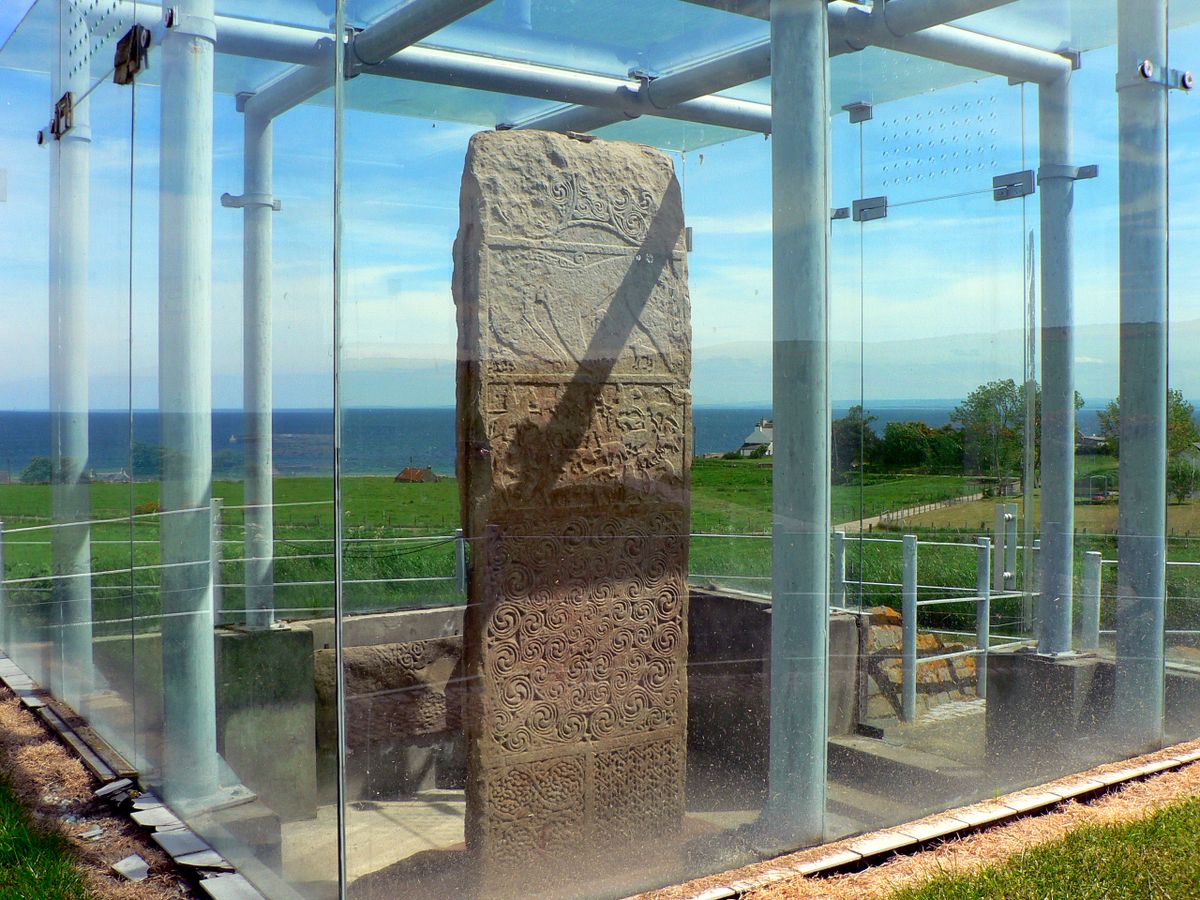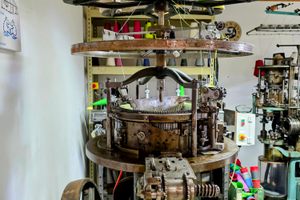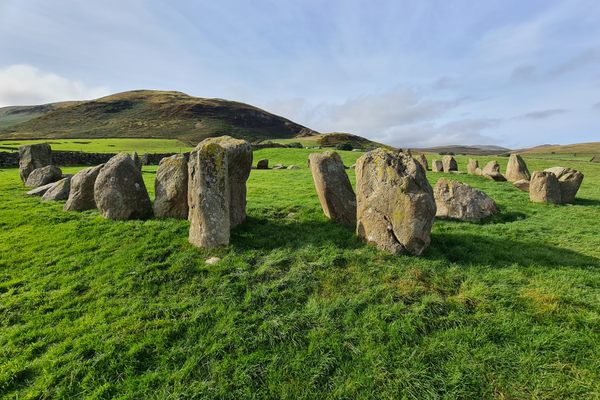About
Clach a' Charridh is located near Shandwick on the Tarbat Peninsula, which explains why it is also referred to as the Shandwick Stone. The Gaelic name Clach a' Charridh means "stone of the grave-plots." It seems the stone got this name because of a burial ground recorded here in 1889 which was last used during the cholera epidemic of 1832.
A Pictish stone is a type of stele that is generally carved with symbols or designs. Clach a' Charridh is referred to as a Class II Pictish stone which is rectangular in shape with a large cross and symbols on one or both sides. Pictish stones of this class usually date from the 8th or 9th century. The symbols on Clach a' Charridh are carved in relief and the cross is filled with designs. The stone was quarried from the cliffs along Shandwick Bay and then moved to the summit of a low hill overlooking the bay.
It is thought that the stone dates back to 780. Although it did not appear in any written records until 1776, at which point it is recorded as still standing intact on a terrace overlooking the sea, on what is thought to possibly be its original site. In 1846 Clach a' Charridh blew down and broke into three pieces, at some point after this it was repaired.
Clach a' Charridh is positioned so the cross faces seaward, and the secular scenes face inland, it is unknown if there is any significance to these directions.
The secular scenes contain six panels, the first is a standard Pictish double-disc, the second a Pictish Beast, and the third might depict a hunting scene, with warriors shown alongside an eagle, a boar, and various other creatures. The bottom three panels consist of woven patterns. The sides of the stone are uncarved, which is unusual for the style. The carvings have a lot in common with illuminated manuscripts like those in the Lindisfarne Gospels.
The Shandwick Stone is 2.7 meters tall, just under a meter wide, and 21 centimeters thick. The stone is now encased in a glass room to protect it from the weather.
Many mysteries surround the Picts themselves. They formed a society that dominated large parts of what is now Scotland for a number of centuries but left no written records, only symbols carved in stone or formed in metalwork. This explains the lack of agreement among experts about what became of the Picts and why they disappeared from history so suddenly and completely.
Related Tags
Know Before You Go
There is a small pull-off at the side of the road in which you can park. A cobbled path then leads from the road to the stone.
Published
August 22, 2023




























